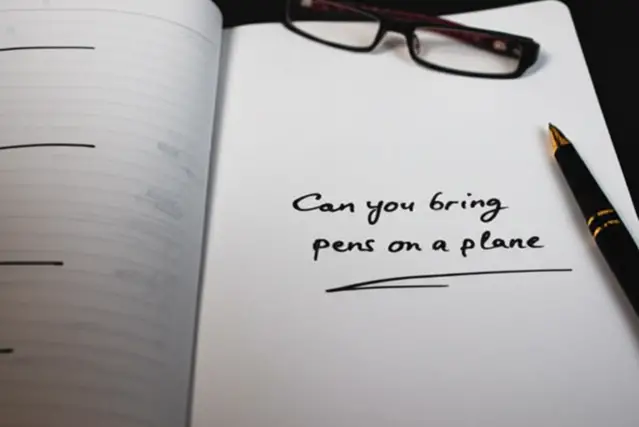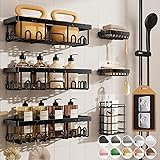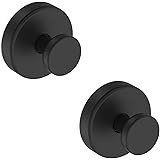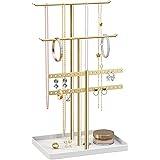Planning a trip in 2025? Whether you’re a seasoned globetrotter or a first-time flyer, navigating airport security and understanding what you can and cannot bring on a plane can be a daunting task. One of the most common, and often overlooked, questions is: “Can I bring pens on a plane?” The short answer is generally yes, but as with most things related to air travel, there’s more to the story. This comprehensive guide provides the most up-to-date information, packing tips, and answers to all your pen-related travel queries, ensuring a smooth and stress-free journey.
In this guide, we’ll delve deep into the regulations surrounding pens (and other writing instruments), covering the TSA’s (Transportation Security Administration) guidelines, international variations, and even some historical context. We’ll also explore some popular types of pens, address common anxieties, and offer helpful tips to help you pack efficiently and avoid any surprises at security checkpoints.
Table of Contents
The Simple Answer: Yes, You Can Bring Pens on a Plane
Let’s start with the good news: The TSA generally allows passengers to bring pens, both in carry-on luggage and checked baggage. This includes standard ballpoint pens, gel pens, rollerball pens, and even fountain pens. You can typically bring as many pens as you need for your trip.
However, it’s important to remember that security regulations can change, and individual TSA officers have the discretion to make decisions based on specific circumstances. This guide will equip you with the knowledge to confidently navigate these situations.
TSA Guidelines on Pens and Other Writing Instruments
The TSA publishes a comprehensive list of permitted and prohibited items on their website. While the list doesn’t specifically mention “pens,” it falls under the category of common personal items allowed in both carry-on and checked bags. The key is to ensure your items do not pose a security threat. Since pens are not considered dangerous, they are generally permitted.
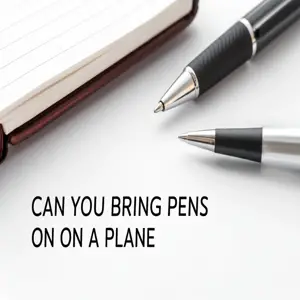
TSA approved pens
Here’s a breakdown of what the TSA typically allows:
- Ballpoint Pens: Always permitted.
- Gel Pens: Always permitted.
- Rollerball Pens: Always permitted.
- Fountain Pens: Generally permitted, but special care may be needed (more on this below).
- Markers: Generally permitted.
- Pencils: Always permitted.
- Highlighters: Always permitted.
Specific Considerations for Fountain Pens
While generally allowed, fountain pens require a bit more attention due to their ink reservoirs. Changes in air pressure during flight can cause fountain pens to leak, creating a mess in your bag or on your clothes. Here’s how to minimize the risk:
- Empty the Pen: The best way to prevent leaks is to empty the ink reservoir before your flight.
- Fill It Completely: Alternatively, a completely full ink reservoir has less room for air expansion, which can also reduce the likelihood of leakage.
- Store Pen Nib Up: Store your fountain pen nib-up during takeoff and landing to keep ink from flowing out.
- Carry in a Sealed Bag: Place your fountain pen in a sealed plastic bag to contain any potential leaks.
TSA Discretion and Unusual Circumstances
It’s crucial to understand that TSA officers have the final say on what is allowed through security. Even if an item is generally permitted, a TSA officer may deem it a security risk based on the specific circumstances. This is rare with standard pens, but be prepared to explain the item if asked. If you have a very unusual or expensive pen, consider packing it in your checked luggage for added peace of mind, although this does carry the risk of loss or damage.
International Regulations: A Global Perspective
While the TSA guidelines are relevant for flights departing from or arriving in the United States, it’s essential to be aware of international regulations if you are flying elsewhere. Security procedures and permitted items can vary from country to country.
Here’s what to consider when traveling internationally with pens:
- Research Local Regulations: Before your trip, check the official website of the airport or aviation authority in your destination country. Look for information about permitted and prohibited items.
- Contact the Airline: If you are unsure, contact your airline for clarification. They can provide specific guidance based on the regulations of the countries you’ll be traveling through.
- Be Prepared for Questions: Security officers in other countries may have different interpretations of what constitutes a potential threat. Be prepared to answer questions about your pens and their intended use.
- Declare Valuable Items: If you are carrying expensive or rare pens, consider declaring them at customs to avoid any issues upon arrival.
Examples of International Variations
While most countries follow similar guidelines as the TSA regarding pens, some may have stricter rules about other items that could indirectly affect your pens. For example, certain countries have restrictions on liquids, which could impact your ability to carry refills for fountain pens. Here are a couple of (hypothetical) examples:
- Country A: May have stricter rules on the quantity of liquids allowed in carry-on bags, potentially affecting ink refills for fountain pens.
- Country B: Might have more rigorous inspections of electronic devices, which could delay you if you’re carrying a smartpen.
The key takeaway is to always research the specific regulations of your destination country to avoid any surprises or delays.
Packing Pens for Air Travel: Tips and Best Practices
Even though pens are generally allowed on planes, packing them correctly can prevent messes and ensure a hassle-free travel experience. Here are some practical tips:
- Carry-On vs. Checked Bag: As mentioned earlier, pens are allowed in both carry-on and checked bags. However, if you have valuable or sentimental pens, it’s generally safer to carry them in your carry-on to minimize the risk of loss or damage.
- Protecting Fountain Pens: If you’re traveling with a fountain pen, take extra precautions to prevent leaks. Empty the ink reservoir, fill it completely, store it nib-up, and carry it in a sealed bag. Consider using a dedicated pen case for added protection.
- Preventing Accidental Marks: Store your pens in a pen case or a zippered compartment within your bag to prevent them from accidentally marking your belongings.
- Keeping Pens Accessible: If you plan to use your pens during the flight (for example, to fill out customs forms), keep them easily accessible in your carry-on bag.
- Consider a Travel Pen Case: Investing in a dedicated travel pen case can help protect your pens and keep them organized. Many options are available, from simple sleeves to multi-pen organizers.
Table: Packing Recommendations for Different Types of Pens
| Pen Type | Carry-On Recommendation | Checked Bag Recommendation | Additional Tips |
|---|---|---|---|
| Ballpoint Pen | Yes | Yes | Store in a pen case or zippered compartment. |
| Gel Pen | Yes | Yes | Store in a pen case to prevent leaks. |
| Rollerball Pen | Yes | Yes | Store in a pen case to prevent leaks. |
| Fountain Pen | Yes (with precautions) | Yes (with precautions) | Empty or completely fill the ink reservoir, store nib-up, and carry in a sealed bag. Use a dedicated pen case. |
| Markers | Yes | Yes | Ensure caps are securely fastened to prevent drying out. |
Understanding the “Why”: Pens and Aviation Security
While pens seem harmless, understanding the underlying principles of aviation security can help you better understand why certain rules are in place. Aviation security aims to prevent any item from being used to compromise the safety of the aircraft or its passengers. This includes preventing the introduction of weapons, explosives, and other dangerous materials.
Pens, in their ordinary form, do not pose a significant security risk. However, in extraordinary circumstances, any item can be misused. This is why security officers maintain the discretion to evaluate items on a case-by-case basis.
The Evolution of Security Regulations
Aviation security regulations have evolved significantly over time, particularly since the events of September 11, 2001. These regulations are constantly reviewed and updated based on emerging threats and security assessments. This means that the rules regarding what you can bring on a plane can change, so it’s always a good idea to check the latest guidelines before your trip.
The Role of Technology in Security
Advancements in technology, such as improved screening equipment, also play a role in aviation security. These technologies help security officers detect potential threats more effectively, allowing them to focus on items that pose a genuine risk. Sophisticated scanners can now identify the composition of materials, reducing the need for manual inspections in some cases.
Trending Types of Pens and Their Air Travel Considerations
The world of writing instruments is constantly evolving, with new types of pens and technologies emerging regularly. Here are some trending types of pens and how their specific features might impact your air travel:
- Smartpens: Smartpens, which digitally record and transcribe handwritten notes, are becoming increasingly popular. These pens typically contain electronic components and batteries, so it’s advisable to pack them in your carry-on luggage to ensure they’re easily accessible if security officers need to inspect them. Ensure they are switched off during takeoff and landing, like any other electronic device.
- Tactical Pens: Tactical pens, often made from durable materials like aluminum, are designed for self-defense purposes. While they may look like ordinary pens, their sturdy construction and potential for use as a weapon can raise red flags with security officers. It’s best to avoid bringing tactical pens on a plane, or to pack them securely in your checked baggage. Be aware that some countries may have restrictions on owning or possessing tactical pens, even outside of the airport environment.
- Luxury Pens: High-end pens, such as Montblanc or Parker pens, are valuable and often irreplaceable. It’s always recommended to carry these in your carry-on luggage, preferably in a protective case, to minimize the risk of loss or damage.
- Refillable Pens: Refillable pens, especially fountain pens, require carrying ink refills. Remember the TSA’s 3-1-1 rule for liquids in carry-on bags, limiting each liquid container to 3.4 ounces (100 milliliters). Pack any ink refills accordingly in a clear, quart-sized bag.
- Pens with Hidden Compartments: Pens designed with hidden compartments, even if empty, are likely to cause significant scrutiny at security checkpoints. It’s best to avoid bringing such items on a plane.
The Growing Popularity of Digital Note-Taking
While traditional pens remain a staple, digital note-taking is increasingly popular. Tablets, styluses, and smartpens offer convenient alternatives for travelers who prefer to keep their notes and documents digitally. If you choose to use digital note-taking devices, be sure to comply with airline regulations regarding electronic devices during takeoff and landing.
Addressing Common Anxieties and Misconceptions
Many travelers experience anxiety about airport security and the rules surrounding what they can bring on a plane. Here are some common anxieties and misconceptions related to pens:
- “Will I be stopped for having too many pens?”: It’s highly unlikely you’ll be stopped for having a reasonable number of pens. Unless you’re carrying an unusually large quantity that could raise suspicion, TSA officers generally won’t be concerned.
- “Are gel pens considered liquids?”: Gel pens are not considered liquids under the TSA’s 3-1-1 rule.
- “Can the ink in my pen explode due to air pressure?”: While fountain pens can leak due to air pressure changes, standard ballpoint and gel pens are unlikely to explode.
- “What if a TSA officer confiscates my pen?”: If a TSA officer deems your pen a security risk (which is rare with standard pens), they may confiscate it. You can ask for a supervisor to review the decision. It’s also important to remember that TSA officers are primarily concerned with safety, and their decisions are made to protect the aircraft and its passengers.
- “Is there a list of approved pens I can consult?”: There is no specific list of approved pens. The TSA’s general guidelines apply to all common writing instruments.
The Importance of Clear Communication
If you have any concerns or questions about bringing pens on a plane, don’t hesitate to ask a TSA officer or airline representative. Clear communication can help resolve any misunderstandings and ensure a smooth travel experience.
Real-World Examples: Pen-Related Airport Encounters
While the rules are generally straightforward, real-world experiences can vary. Here are some examples of pen-related airport encounters and how to handle them:
- Example 1: The Leaky Fountain Pen: A traveler was carrying a fountain pen in their carry-on bag. During takeoff, the pen leaked, staining their shirt. They quickly used a wet wipe to clean the stain and then stored the pen in a sealed bag for the rest of the flight. Lesson: Always take precautions to prevent fountain pen leaks.
- Example 2: The Questionable Tactical Pen: A traveler was carrying a tactical pen in their pocket. A TSA officer noticed it during the security screening and questioned its purpose. The traveler explained that it was a gift and not intended for self-defense. The officer allowed the traveler to proceed after a brief inspection. Lesson: Avoid carrying tactical pens if possible, or pack them securely in your checked baggage.
- Example 3: The Inquisitive Child: A parent was traveling with a young child who was fascinated by the pens in their bag. During the flight, the child accidentally opened a gel pen, causing a small mess. The parent quickly cleaned it up with a wet wipe and apologized to the nearby passengers. Lesson: Keep pens out of reach of young children to prevent accidental messes.
- Example 4: The Forgotten Penknife: A traveler unknowingly had a small penknife attached to their keychain. This was flagged during the security screening, and the penknife was confiscated. Lesson: Always double-check your belongings for prohibited items before heading to the airport.
Learning from Others’ Experiences
Reading about other travelers’ experiences can provide valuable insights and help you prepare for potential challenges. Online travel forums and blogs often feature discussions about airport security and permitted items. Consider researching these resources to learn from others’ successes and mistakes.
The Environmental Impact of Pens and Sustainable Alternatives
In today’s world, sustainability is a growing concern. Considering the environmental impact of your pens is a responsible practice. Traditional disposable pens contribute to plastic waste. Here are some sustainable alternatives:
- Refillable Pens: Choose refillable pens, such as fountain pens or ballpoint pens with replaceable ink cartridges.
- Pens Made from Recycled Materials: Look for pens made from recycled plastic or other sustainable materials.
- Biodegradable Pens: Some pens are made from biodegradable materials, reducing their environmental impact.
- Minimize Pen Usage: Consider using digital note-taking tools to reduce your overall pen consumption.
- Proper Disposal: Dispose of used pens responsibly. Some companies offer pen recycling programs.
The Rise of Eco-Conscious Travel
Eco-conscious travel is becoming increasingly popular as more people seek to minimize their environmental footprint. Choosing sustainable travel products, including pens, is one way to contribute to a more sustainable future.
Beyond the Basics: Creative Uses for Pens While Traveling
Pens aren’t just for writing; they can be surprisingly versatile tools while traveling. Here are some creative uses:
- Sketching and Journaling: Use your pens to sketch scenes from your travels or to write about your experiences in a travel journal.
- Filling Out Forms: Keep a pen handy for filling out customs forms, immigration documents, and other travel-related paperwork.
- Making Lists: Use your pens to create to-do lists, packing lists, and shopping lists.
- Leaving Notes: Leave thank-you notes for hotel staff or write messages to friends and family.
- Playing Games: Use your pens to play simple games like tic-tac-toe or hangman with fellow travelers.
- Emergency Tool: In a pinch, a sturdy pen can be used as a makeshift tool for minor repairs or adjustments.
The Power of Handwritten Communication
In an increasingly digital world, the act of writing by hand can be a powerful and meaningful way to connect with others. Consider using your pens to send postcards, write letters, or create personalized gifts for the people you meet on your travels.
Staying Up-to-Date: Changes in Aviation Security Regulations
Aviation security regulations are constantly evolving. To stay informed about the latest changes, follow these tips:
- Check the TSA Website: Regularly visit the TSA website for updates on permitted and prohibited items.
- Subscribe to TSA Newsletters: Sign up for email newsletters from the TSA and other aviation security organizations.
- Follow the TSA on Social Media: Follow the TSA on social media platforms like Twitter and Facebook for real-time updates and announcements.
- Read Travel Blogs and Forums: Stay informed by reading travel blogs and forums that discuss aviation security regulations.
- Consult Airline Representatives: If you have any questions or concerns, contact your airline for clarification.
The Impact of Global Events on Security Regulations
Global events, such as terrorist attacks or pandemics, can significantly impact aviation security regulations. Be prepared for potential changes and increased security measures in response to these events.
Alternative Writing Utensils and Their Travel Considerations
While pens are the most common writing utensils, other options exist. Here’s a look at alternative writing tools and their travel considerations:
- Pencils: Pencils are always permitted on planes.
- Crayons: Crayons are generally allowed in carry-on and checked bags.
- Charcoal Pencils: Charcoal pencils are permitted, but be careful to pack them securely to prevent smudging.
- Styluses: Styluses for tablets and smartphones are allowed. Make sure to keep your electronic devices turned off when the flight attendants advice to.
- Paint Markers: Paint markers (like Sharpie paint pens) are more restricted due to their liquid content and flammability. Small paint markers *might* be allowed in carry-on baggage as long as they adhere to the 3-1-1 liquids rule, but it’s best to check with the airline and TSA beforehand. Larger ones should go in checked baggage, packed securely.
The Best Writing Utensil for Different Travel Scenarios
The best writing utensil for your trip depends on your specific needs and preferences. Consider factors such as portability, durability, and writing quality when making your choice.
Luxury Pens: Protecting Your Investment While Traveling
If you’re traveling with luxury pens, such as Montblanc, Parker, or Waterman pens, it’s essential to take extra precautions to protect your investment. Here are some tips:
- Carry in Your Carry-On: Always carry your luxury pens in your carry-on luggage to minimize the risk of loss or damage.
- Use a Protective Case: Invest in a high-quality pen case that provides adequate protection against impacts and scratches.
- Insure Your Pens: Consider insuring your luxury pens against loss, theft, or damage.
- Avoid Extreme Temperatures: Protect your pens from extreme temperatures, which can damage the ink or the pen’s components.
- Clean Your Pens Regularly: Clean your pens regularly to maintain their performance and prevent ink buildup.
The Value of Proper Pen Maintenance
Proper pen maintenance can extend the life of your luxury pens and preserve their value. Follow the manufacturer’s instructions for cleaning, storing, and maintaining your pens.

travel writing pens
FAQ: Your Top Questions About Bringing Pens on a Plane Answered
Here are answers to some of the most frequently asked questions about bringing pens on a plane:
Can I bring multiple pens in my carry-on?
Yes, you can generally bring multiple pens in your carry-on luggage. There is no limit to the number of pens you can bring, as long as they do not pose a security risk.
Are there any restrictions on the type of ink I can use in my fountain pen?
There are no specific restrictions on the type of ink you can use in your fountain pen, but it’s advisable to use high-quality ink to prevent clogs and leaks.
What should I do if a TSA officer questions my pen?
If a TSA officer questions your pen, remain calm and politely explain its purpose. If you believe the officer is mistaken, you can ask for a supervisor to review the decision.
Can I bring a pen with a built-in laser pointer?
Pens with built-in laser pointers may be subject to additional scrutiny at security checkpoints. It’s best to check with the airline and TSA beforehand to ensure they are permitted.
Are calligraphy pens allowed on planes?
Yes, calligraphy pens are generally allowed on planes, but be mindful of potential ink leaks if they are fountain pen style.
Can I bring paint pens on the plane?
Paint pens can be tricky. If they fall under the TSA’s liquid rules (3.4oz or less), they *might* be allowed in carry-on. However, it’s best to pack them securely in checked baggage to avoid any issues, especially since many contain flammable materials.
What about erasable pens?
Erasable pens (like Frixion pens) are perfectly fine to bring on a plane. They are treated like regular gel pens.
I have a vintage pen collection. How should I pack it?
Treat vintage pens like luxury pens. Carry them in your carry-on, in a padded and protective case. Consider insuring them for the trip. Also, be prepared for potential questions from security, and have documentation (like appraisals or purchase receipts) ready if possible.
Is it better to buy pens at my destination to avoid problems?
If you are very concerned about potential issues, buying pens at your destination is an option. However, the vast majority of travelers experience no problems bringing standard pens on a plane.
What if my pen is confiscated? Can I get it back?
If your pen is confiscated, you typically won’t be able to get it back. The TSA has procedures for handling confiscated items, but pens are rarely returned. This is why it’s best not to bring irreplaceable or very valuable pens unless absolutely necessary.
Conclusion: Final Thoughts on Flying with Pens
So, can you bring pens on a plane? The resounding answer is yes! Pens are generally permitted in both carry-on and checked baggage, offering a simple convenience that can make your travel experience smoother and more enjoyable. Whether you’re a student taking notes, a business professional signing documents, or simply someone who enjoys the tactile experience of writing, having a pen on hand during your travels is often indispensable.
Remember to be mindful of potential issues, especially with fountain pens. Proper packing, research on international regulations, and awareness of trending pen types can help you avoid unnecessary hassles. Don’t hesitate to ask TSA officers or airline representatives any questions you may have. Clear communication can prevent misunderstandings and ensure a smooth journey.
Aviation security regulations are constantly evolving, so staying informed is key. Keep up-to-date with TSA guidelines, subscribe to newsletters, and follow social media channels for the latest updates. This knowledge empowers you to navigate airport security with confidence and peace of mind.
Beyond practicality, consider the environmental impact of your pen choices. Opt for sustainable alternatives like refillable or recycled pens to reduce your carbon footprint. Embracing eco-conscious travel is a small but significant step toward a more sustainable future for all.
Ultimately, the ability to bring pens on a plane is a testament to their harmless nature and the evolution of security protocols that focus on genuine threats. So, pack your favorite pens, embark on your adventures, and enjoy the journey, knowing that you’re well-prepared and informed!

